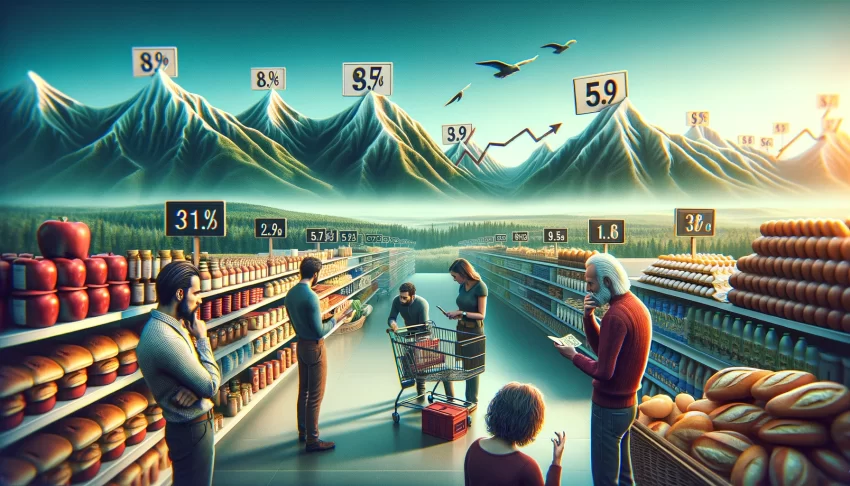| Listen to our audio presentation: U.S. Job Growth Surges in February 2024 |
In a surprising twist, inflation has once again reared its head, posing a challenge to the economic outlook. According to the latest data from the Bureau of Labor Statistics, the Consumer Price Index (CPI) for February rose by 0.4% over the previous month, marking a 3.2% increase over the past year. This uptick in inflation exceeded economists’ forecasts and has reignited concerns about the persistence of inflationary pressures in the economy.
- February’s Consumer Price Index (CPI) showed a 0.4% monthly increase and a 3.2% annual increase, exceeding forecasts.
- Core inflation, excluding food and gas, rose 0.4% monthly and 3.8% annually.
- Shelter and gas prices contributed significantly to the inflation increase.
- The Federal Reserve is expected to keep rates unchanged in the upcoming March meeting, with potential rate cuts anticipated in June.
- Energy prices, particularly gas, rebounded after previous declines, while shelter costs remained high.
One of the key drivers of February’s inflation surge was the cost of shelter, which continues to be a thorn in the side of consumers. The shelter index rose by 5.7% on an annual basis, contributing significantly to the overall inflation rate. Rent costs, in particular, saw a 0.4% increase for the month, underscoring the ongoing challenges in the housing market.
Adding fuel to the fire, gasoline prices also experienced a notable increase, climbing by 3.8% from January to February. This rise in energy costs has a ripple effect on the broader economy, impacting everything from transportation to manufacturing.
Core inflation, which excludes the volatile food and energy sectors, rose by 0.4% on a monthly basis and 3.8% annually. This is a clear indication that inflationary pressures are not confined to specific sectors but are more widespread across the economy.
The implications of persistent inflation are far-reaching. For consumers, it means continued pressure on purchasing power, with rising costs for essential goods and services. For the Federal Reserve, it presents a conundrum: how to balance the need to tame inflation with the risk of stifling economic growth.
Investors and market analysts are closely watching the Federal Reserve’s next moves. The central bank’s decision on interest rates, scheduled for March 20, will be a critical indicator of its strategy to combat inflation. While markets are currently betting on a rate cut in June, this could change if inflation continues to exceed expectations.
The recent inflation data serves as a reminder that the path to economic stability is fraught with challenges. As the Federal Reserve navigates these turbulent waters, the broader economy will feel the effects. The coming months will be crucial in determining whether inflation can be brought under control or if it will continue to be a persistent thorn in the side of economic progress.

